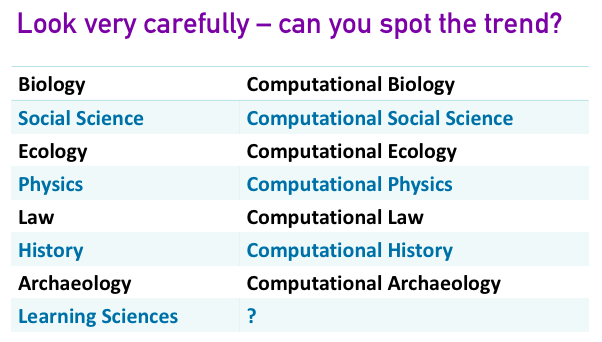ICLS 2018 Keynote: Transitioning Education’s Knowledge Infrastructure
Keynote, International Conference of the Learning Sciences 2018, London Festival of Learning
Transitioning Education’s Knowledge Infrastructure: Shaping Design or Shouting from the Touchline?
Download HD / other • Slides PDF / Slideshare
Abstract: Bit by bit, a data-intensive substrate for education is being designed, plumbed in and switched on, powered by digital data from an expanding sensor array, data science and artificial intelligence. The configurations of educational institutions, technologies, scientific practices, ethics policies and companies can be usefully framed as the emergence of a new “knowledge infrastructure” (Paul Edwards).
The idea that we may be transitioning into significantly new ways of knowing – about learning and learners – is both exciting and daunting, because new knowledge infrastructures redefine roles and redistribute power, raising many important questions. For instance, assuming that we want to shape this infrastructure, how do we engage with the teams designing the platforms our schools and universities may be using next year? Who owns the data and algorithms, and in what senses can an analytics/AI-powered learning system be ‘accountable’? How do we empower all stakeholders to engage in the design process? Since digital infrastructure fades quickly into the background, how can researchers, educators and learners engage with it mindfully? If we want to work in “Pasteur’s Quadrant” (Donald Stokes), we must go beyond learning analytics that answer research questions, to deliver valued services to frontline educational users: but how are universities accelerating the analytics innovation to infrastructure transition?
Wrestling with these questions, the learning analytics community has evolved since its first international conference in 2011, at the intersection of learning and data science, and an explicit concern with those human factors, at many scales, that make or break the design and adoption of new educational tools. We are forging open source platforms, links with commercial providers, and collaborations with the diverse disciplines that feed into educational data science. In the context of ICLS, our dialogue with the learning sciences must continue to deepen to ensure that together we influence this knowledge infrastructure to advance the interests of all stakeholders, including learners, educators, researchers and leaders.
Speaking from the perspective of leading an institutional analytics innovation centre, I hope that our experiences designing code, competencies and culture for learning analytics sheds helpful light on these questions.

Biography: Simon Buckingham Shum is Professor of Learning Informatics at the University of Technology Sydney, which he joined in August 2014 as inaugural director of the Connected Intelligence Centre: https://utscic.edu.au. Prior to this, he was Professor of Learning Informatics and Associate Director (Technology) at the UK Open University’s Knowledge Media Institute. He brings a background in Psychology, Ergonomics and Human-Computer Interaction, and a career-long fascination with making thinking visible using software. He co-founded the Compendium Institute to connect the international community using his team’s Compendium visual hypermedia tool, used widely for Dialogue, Issue and Argument Mapping in both education and business. He co-edited Visualizing Argumentation (2003, with Kirschner & Carr) followed by Knowledge Cartography (2008, 3rdEdition now in prep., with Okada & Sherborne), and wrote Constructing Knowledge Art (2015, with Selvin). He has been active in shaping the field of Learning Analytics since the inaugural LAK 2011 conference, serving as a Program Chair (2012/2018), convening many workshops, and a regular keynote speaker. He co-founded the Society for Learning Analytics Research, serving as a V-P and on the Executive. Homepage: http://Simon.BuckinghamShum.net